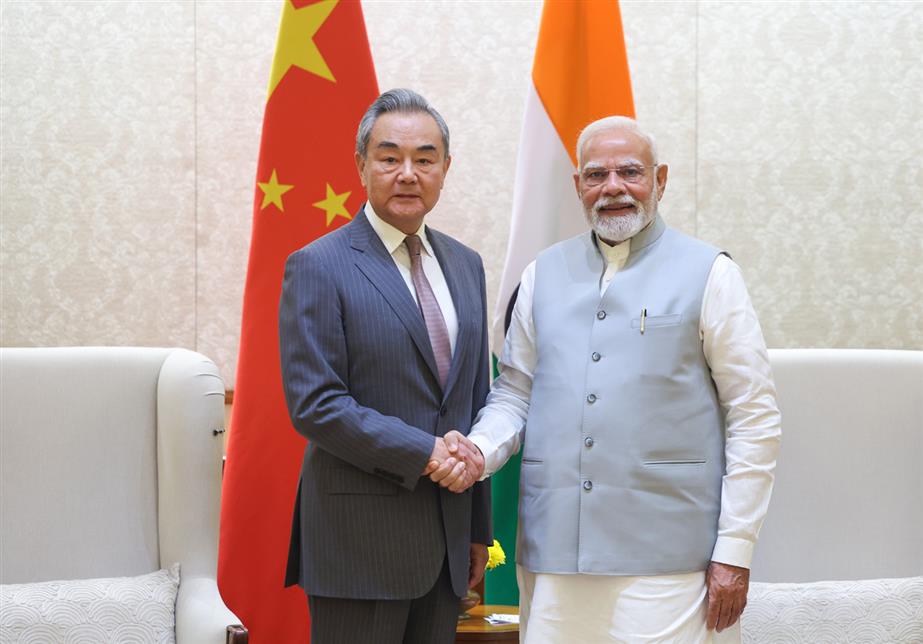New Delhi/Beijing, August 21, 2025 – After years of hostility and silence, India and China — two neighbors who share not just borders but also centuries of history — are quietly attempting to mend broken ties. From restoring flights to reviving cultural exchanges, recent steps mark what some call the “fragile reset.” But beyond the numbers and policy briefings, ordinary people on both sides are watching closely, wondering: Will this time be different?
Years of Distrust
Since the Galwan Valley clash of 2020, where 20 Indian soldiers and four Chinese troops lost their lives, the relationship spiraled downward. Military standoffs, suspended trade agreements, blocked visas, and even cancelled student exchanges froze what was once a steadily growing partnership.
Border villagers in Ladakh still recall those nights when the mountains echoed with tension. “Hum sirf shanti chahte hain,” said Dorje, a farmer in Leh. “Politics alag hai, par hamari zindagi sirf aman par tikki hai.” (We only want peace. Politics is separate, but our lives depend on peace.)
A New, Cautious Beginning
This week, Chinese Foreign Minister Wang Yi’s visit to New Delhi signaled a thaw. After hours of talks, both sides agreed to:
- Resume flights suspended since the pandemic.
- Reinstate journalist visas, allowing reporters back into each other’s countries.
- Reopen cultural and student exchanges — a huge relief for thousands of Indian students who had been stuck midway through degrees in China.
- Restart military-to-military talks on stabilizing border patrols.
“It’s not friendship yet, but at least it’s communication,” said an Indian diplomat off record.
Global Pressures Driving Diplomacy
What triggered this shift? Part of the answer lies thousands of miles away in Washington. The U.S. decision to push tariffs up to 50% on imports has rattled both Beijing and New Delhi.
- China, already locked in a trade war with the U.S., cannot afford more isolation.
- India, facing one of Asia’s sharpest earnings downgrades, knows instability with China will only deepen its economic vulnerability.
As one Mumbai-based trader put it: “Politics thodi der ke liye side rakho. Business ruk gaya to rozgaar khatam ho jaayega.” (Forget politics for a moment — if business stops, jobs will disappear.)
Flashpoint: The River that Connects Lives
But mistrust runs deep. China’s plan to build a mega-dam on the Yarlung Tsangpo River in Tibet — which becomes the Brahmaputra in India — has triggered alarm.
In Assam, fisherman Abdul Rahman looks at the river every morning with worry. “Yeh nadi hamari rozi hai. Agar paani ka flow badal gaya toh hum kya karenge?” (This river is our livelihood. If the water flow changes, what will we do?)
Environmentalists fear flooding, displacement, and ecological disruption. For many in India’s Northeast, the dam isn’t just geopolitics — it’s survival.
The Economic Ties That Bind
Despite tensions, trade between the two countries hit $136 billion in 2024, with India importing crucial goods — from pharma ingredients to electronics — from China. But the imbalance is stark: India’s deficit crossed $100 billion.
Still, business owners see opportunity in reopening channels. A textile exporter in Tiruppur said: “Ek baar flight aur cargo normal ho jaye, humare orders revive ho jaayenge. Workers ko kaam milega. Simple.”
The Strategic Chessboard
Globally, India has tilted closer to the U.S. and the Quad alliance (Japan, Australia, U.S.), while China has tightened its Russia ties. Both remain rivals in South Asia, Africa, and the Indian Ocean.
Yet, neither wants open conflict. Instead, they are finding small spaces for cooperation — in BRICS, climate talks, and trade forums. For now, pragmatism is winning over pride.
The Human Cost of Silence
Perhaps the clearest sign of the thaw is visible among students. Over 23,000 Indian students, mostly in medicine, were stranded when China closed borders after 2020.
Rohit Sharma, a 23-year-old from Patna, had to put his MBBS dream on hold. “Main roz news check karta hoon,” he said. “Agar visa khul gaya toh meri zindagi track par aa jaayegi.” (I check the news daily. If visas reopen, my life will get back on track.)
Families divided by business, education, and cultural ties are also waiting. As one Delhi-based parent put it: “Hamare bacche ka future diplomacy par atka hai.” (Our children’s future is stuck in diplomacy.)
A Fragile Reset
Experts caution against over-optimism. Border disputes remain unresolved, mistrust lingers, and both governments continue to jostle for influence in Asia.
Still, even a limited reset matters. “This is not reconciliation,” said a Delhi-based analyst. “It’s a pause, born out of necessity. But even pauses matter — they give space for people to breathe.”
For millions on both sides, the hope is simple: fewer confrontations, more conversations.
Conclusion
India and China’s reset is not a grand friendship — it’s a delicate balancing act shaped by economics, global politics, and human need. The next few months will reveal whether this fragile peace holds or collapses back into suspicion.
But for villagers along the border, for students stuck mid-degree, and for traders waiting for goods to move again, even this fragile thaw feels like a breath of fresh air.

